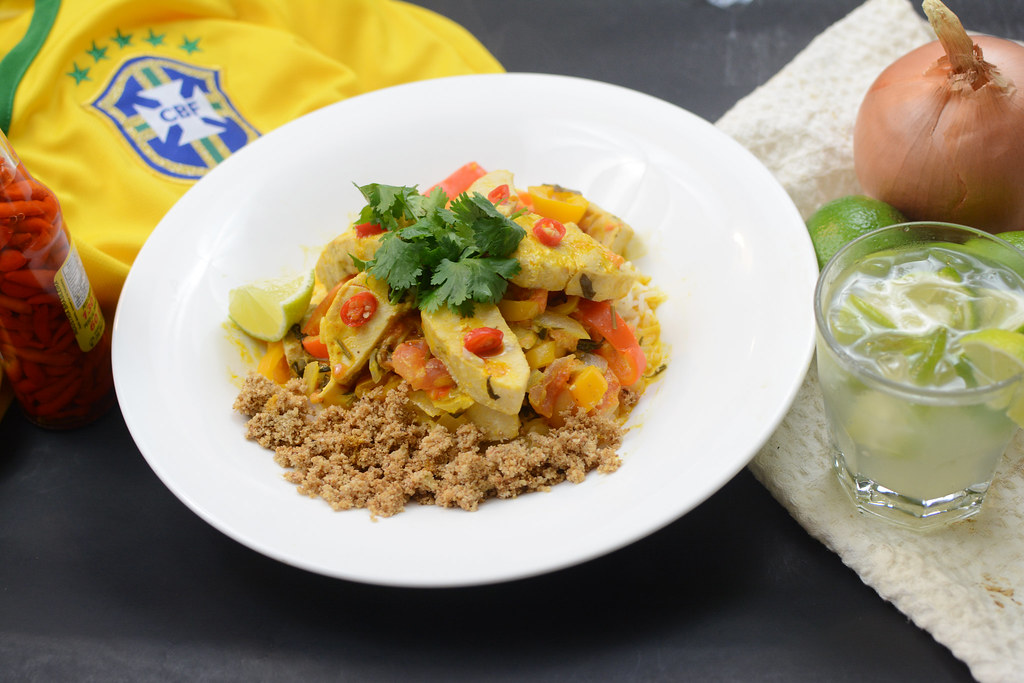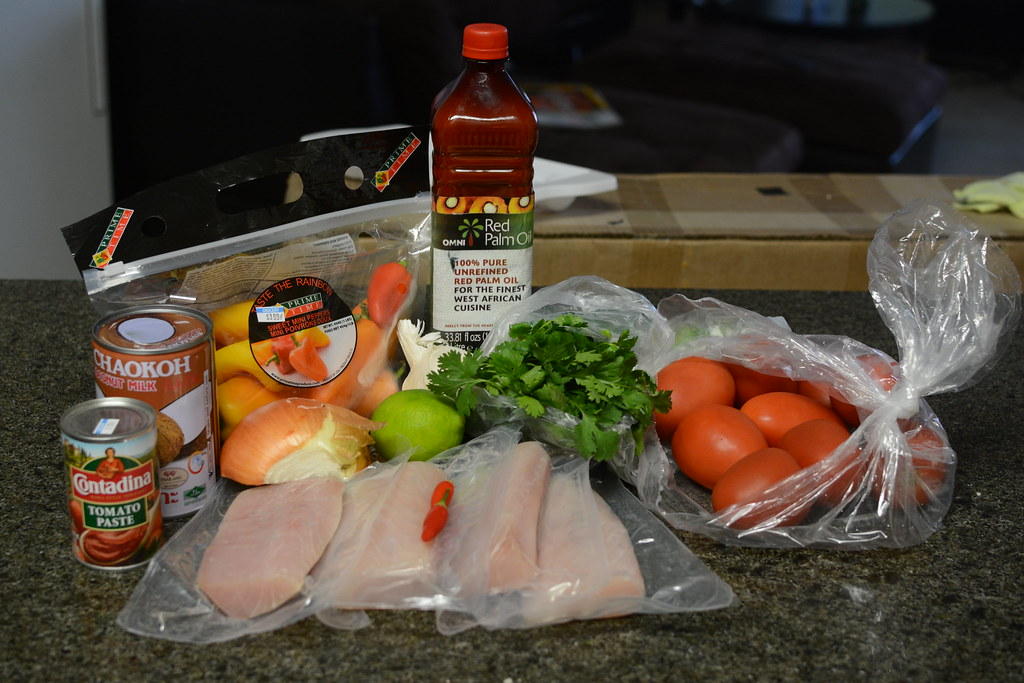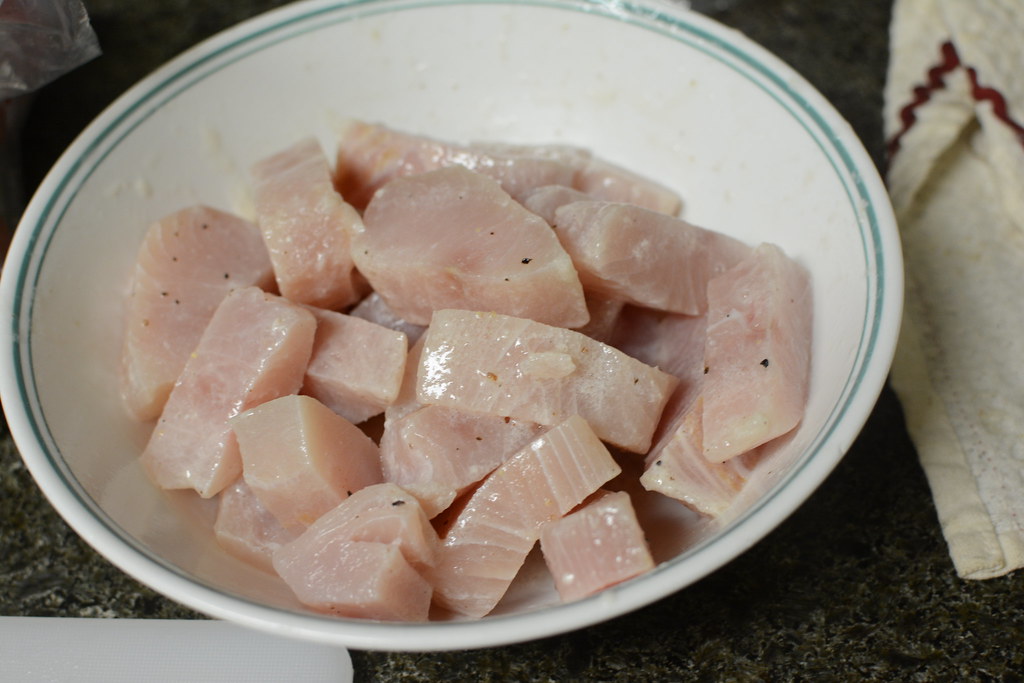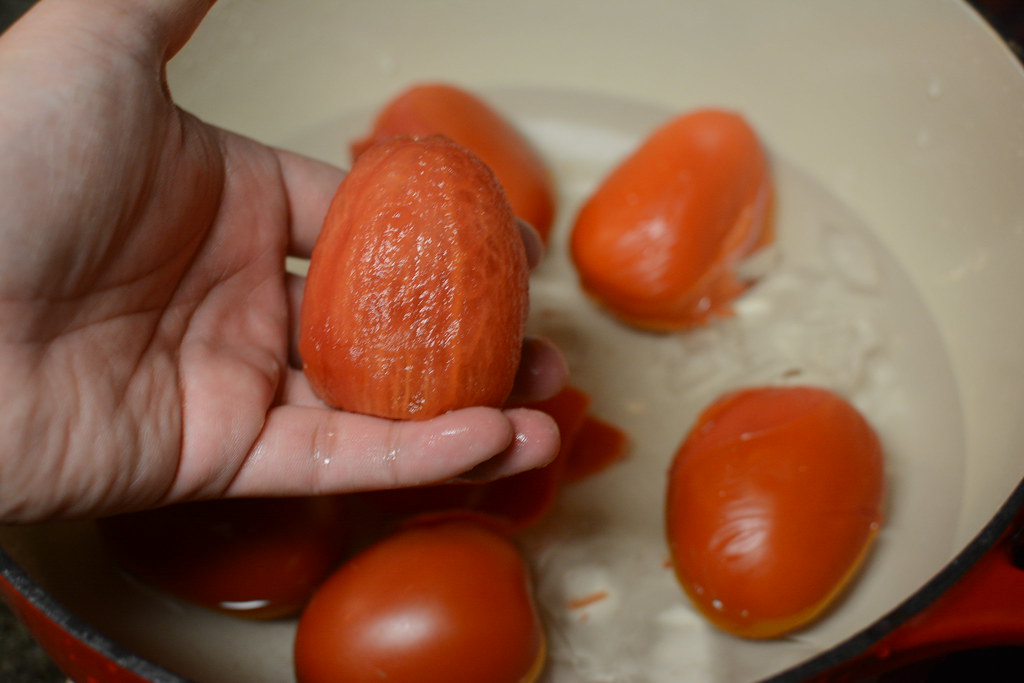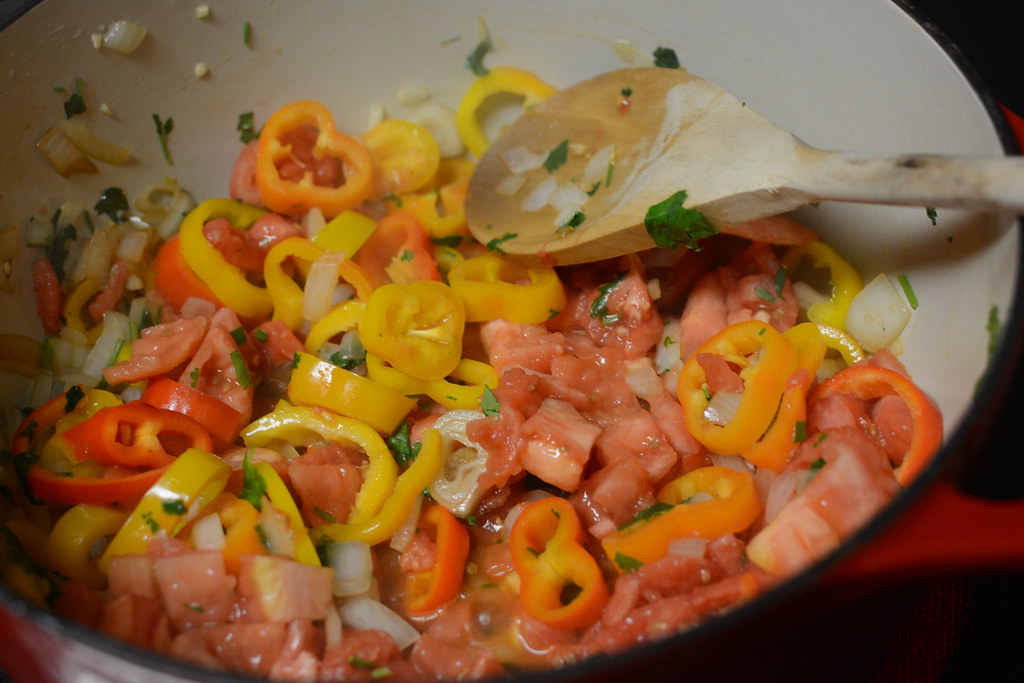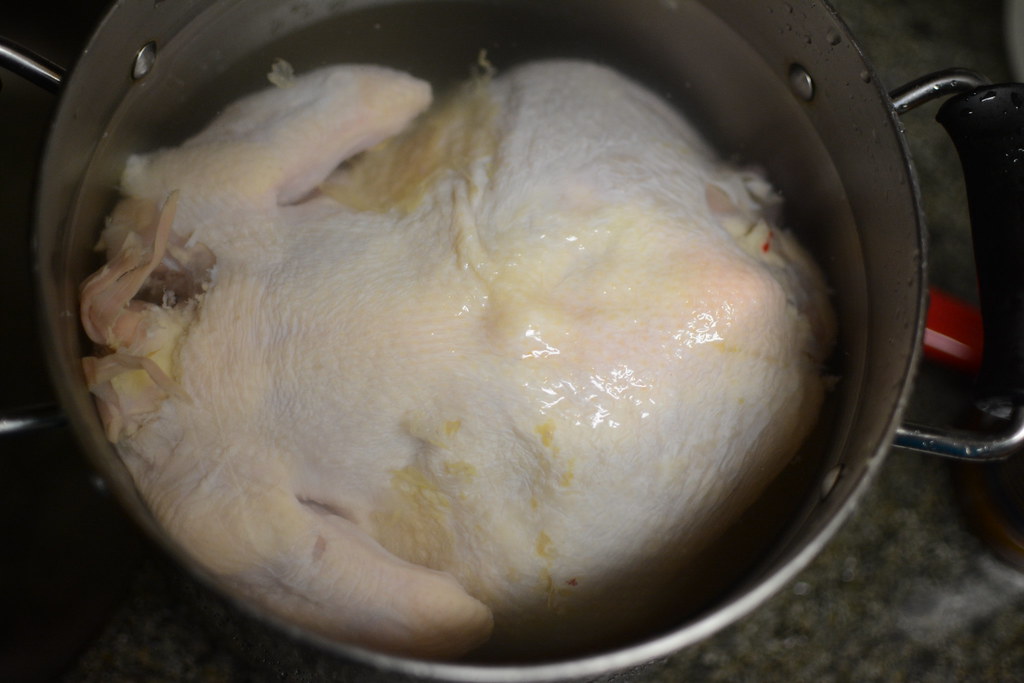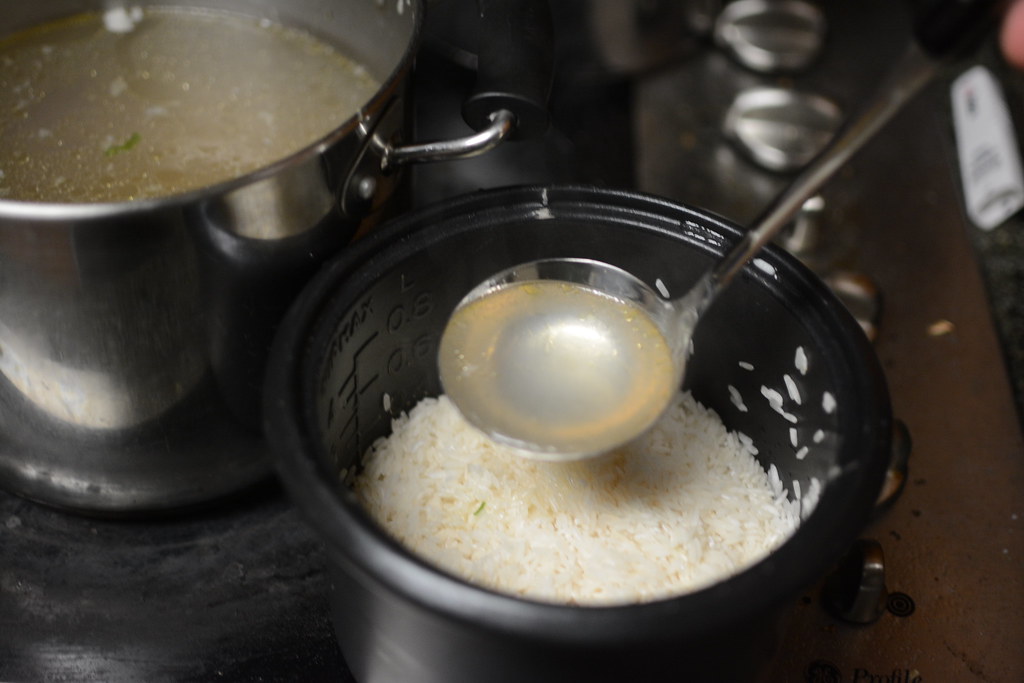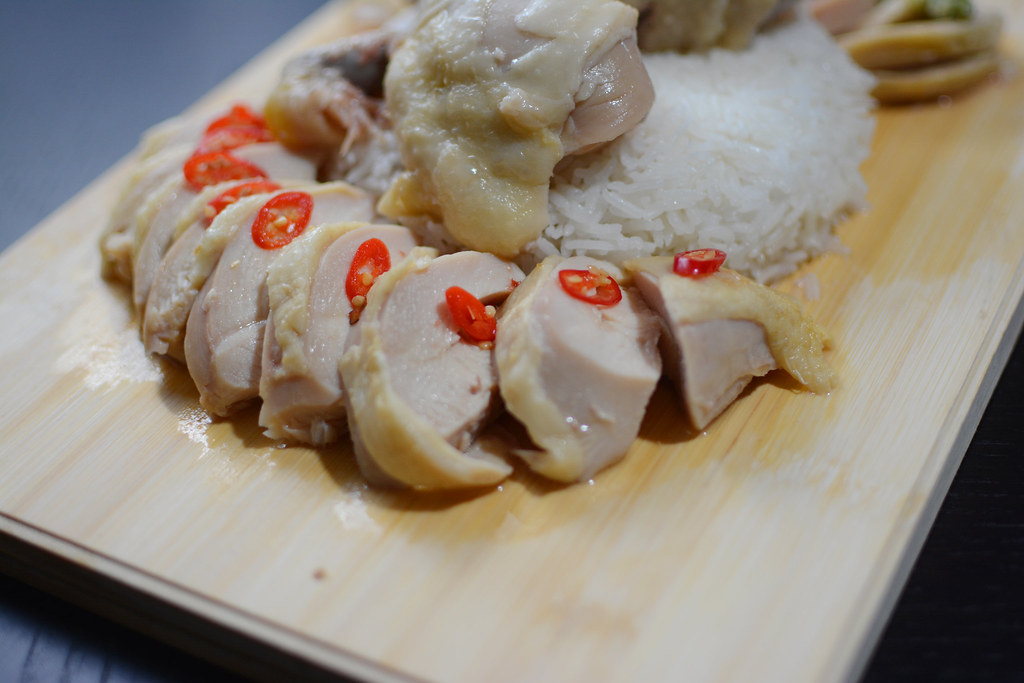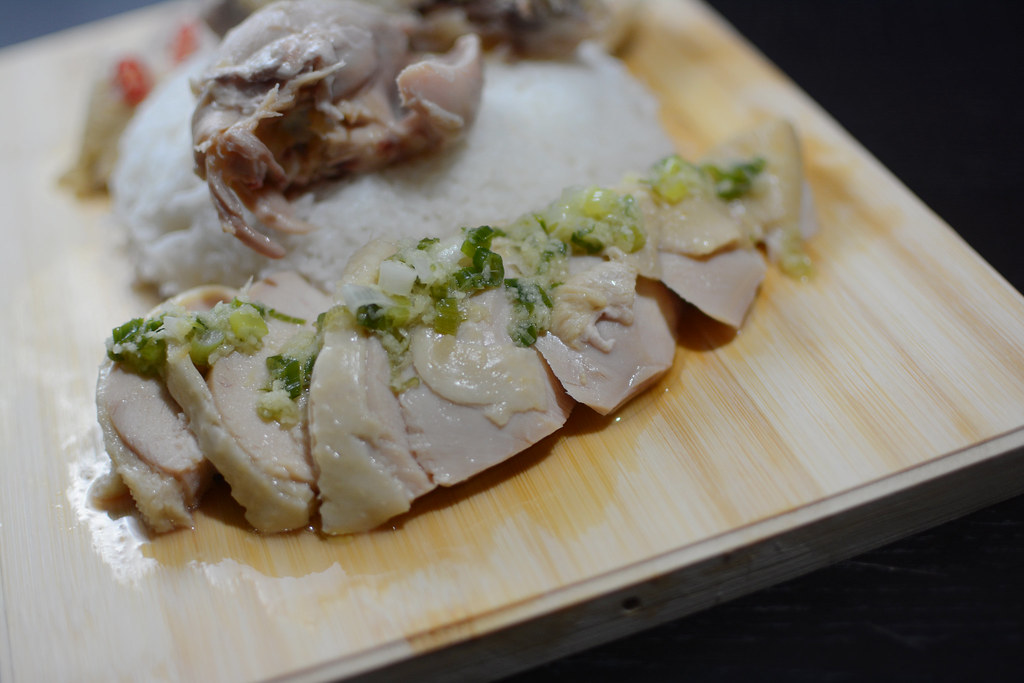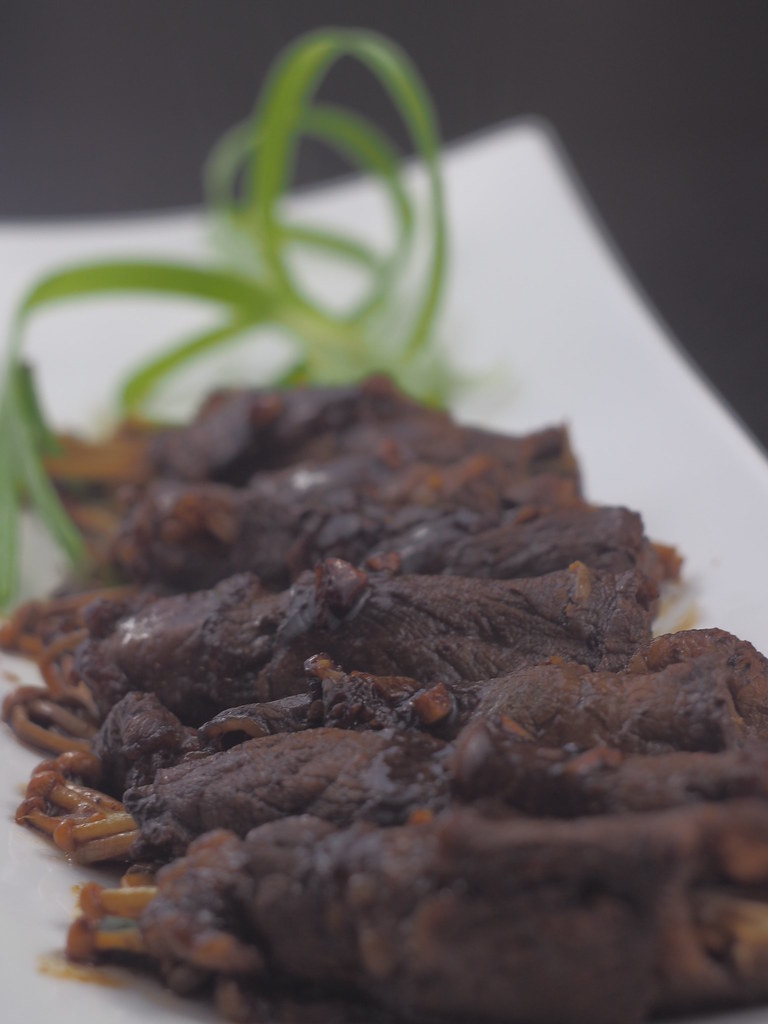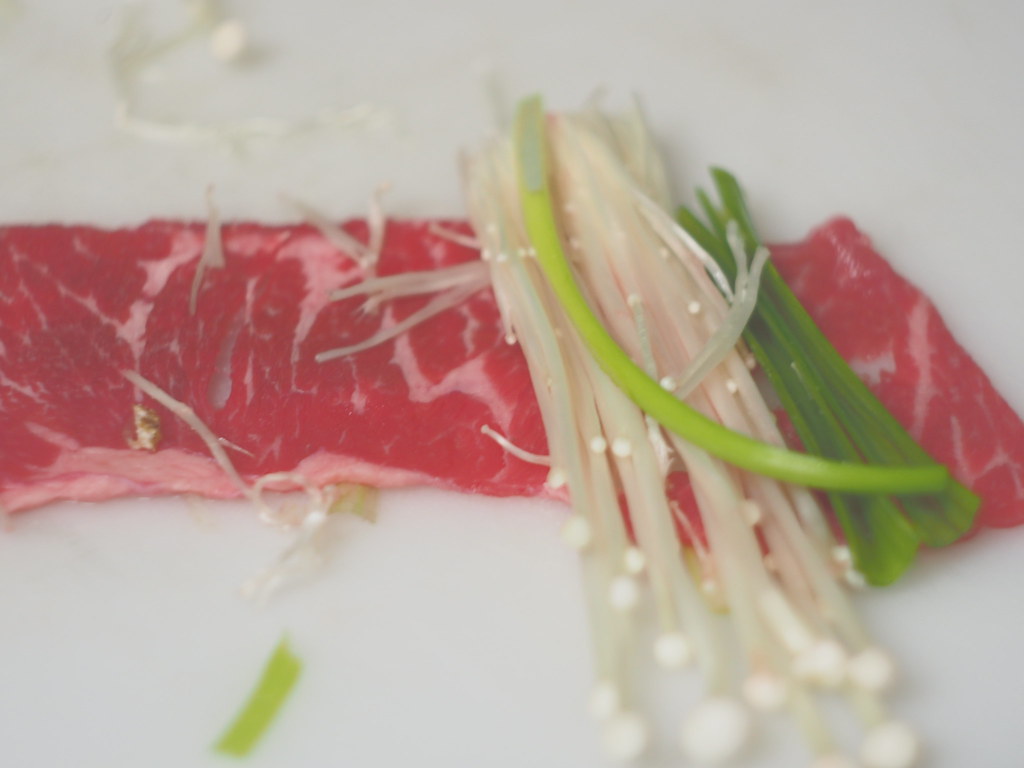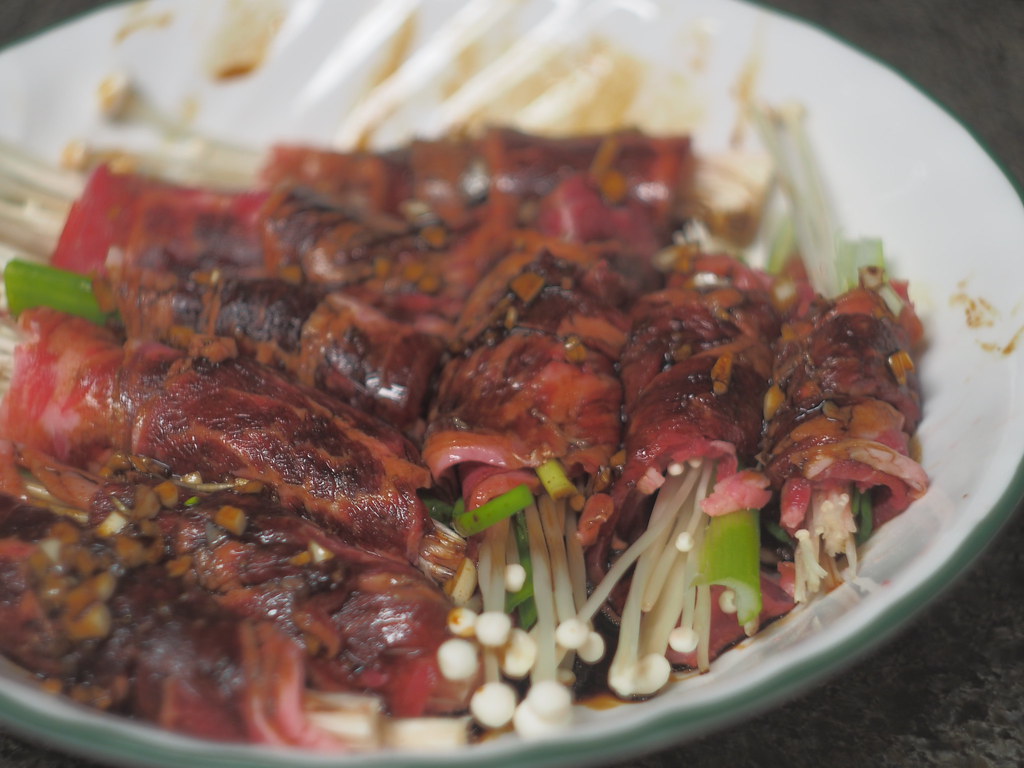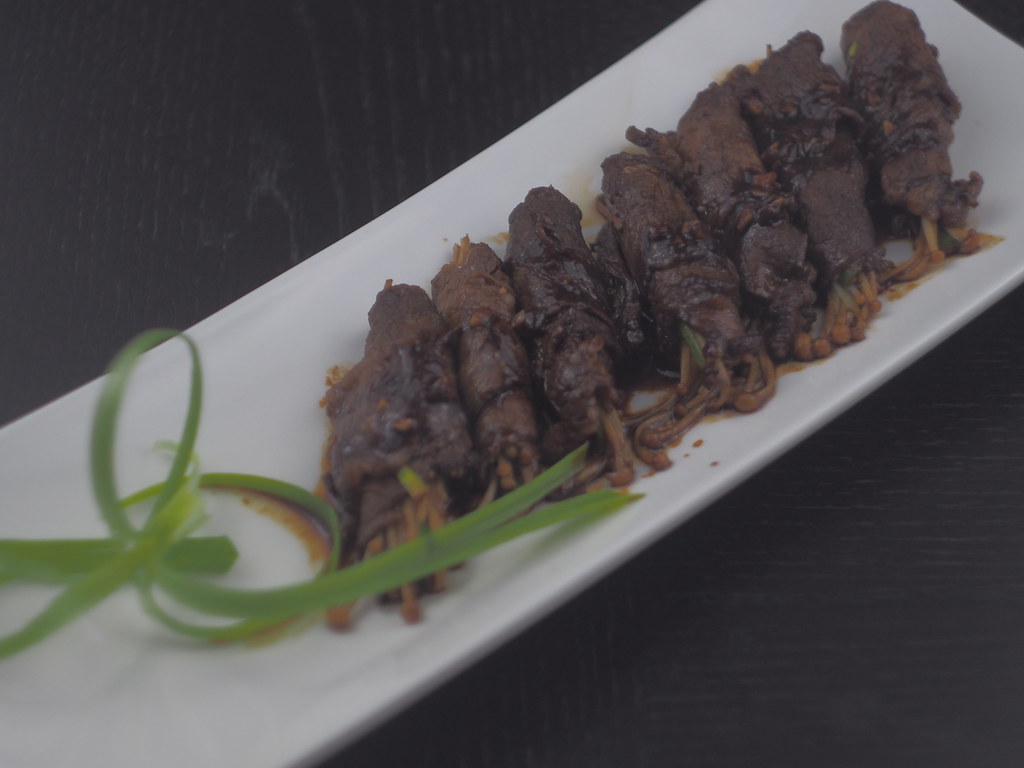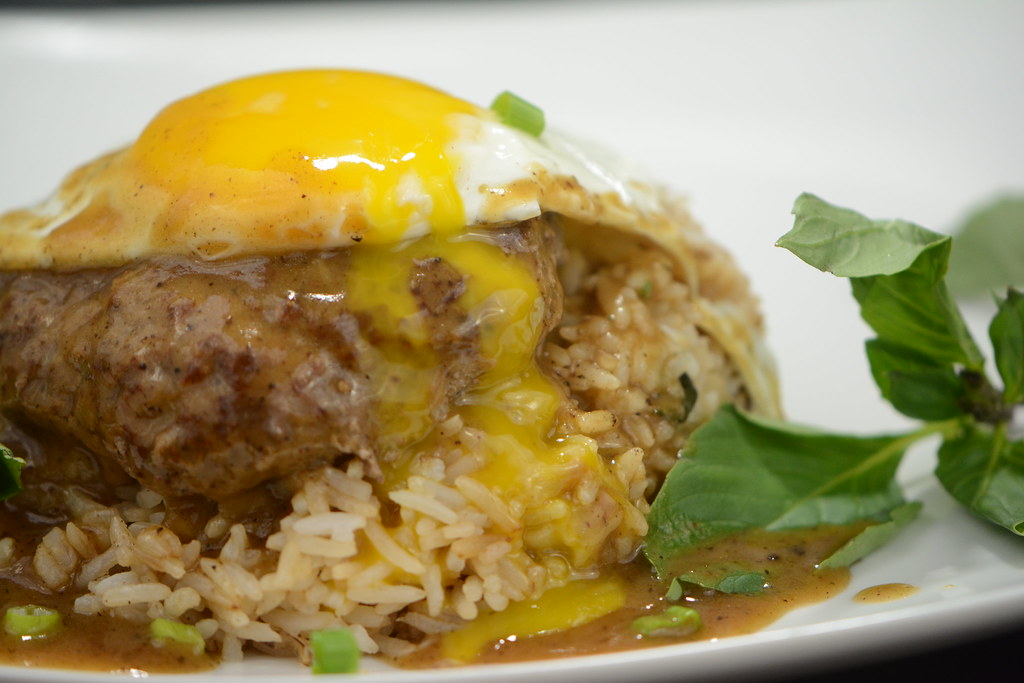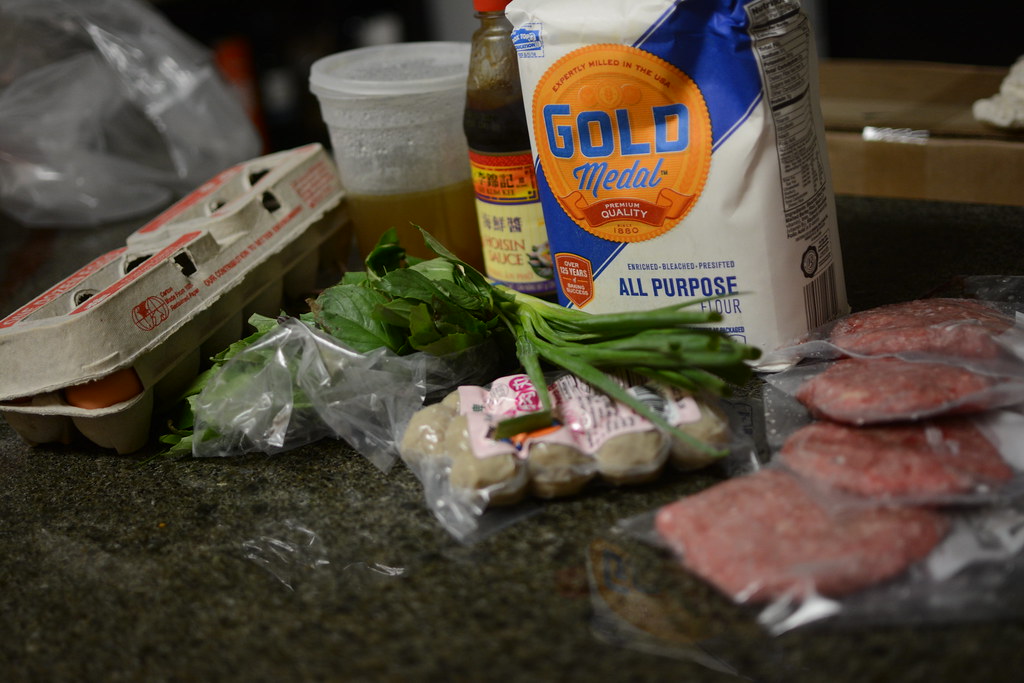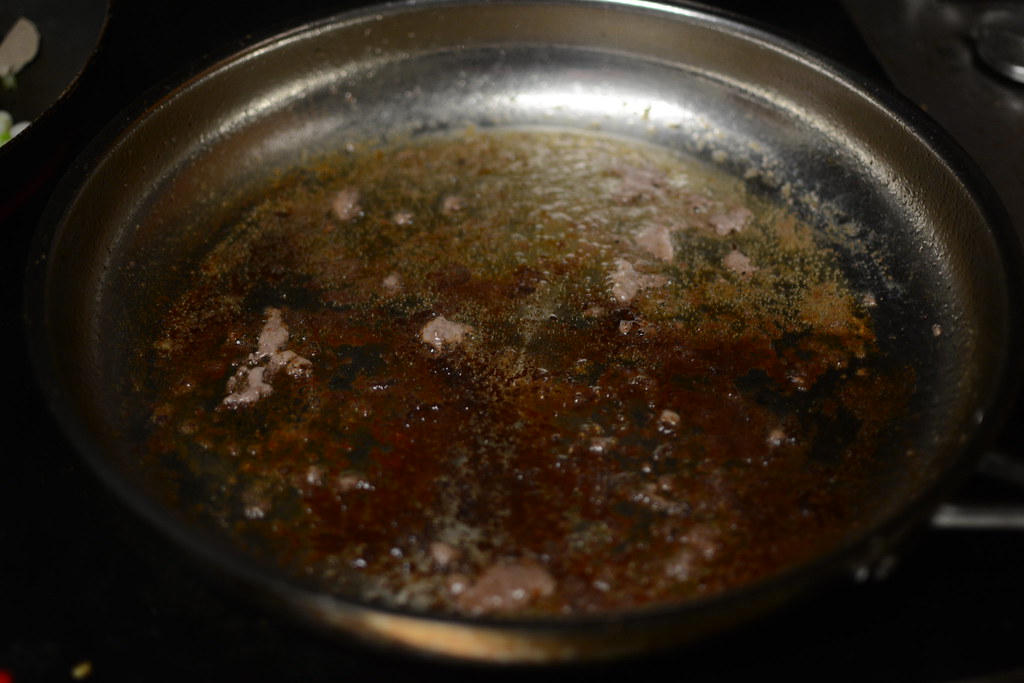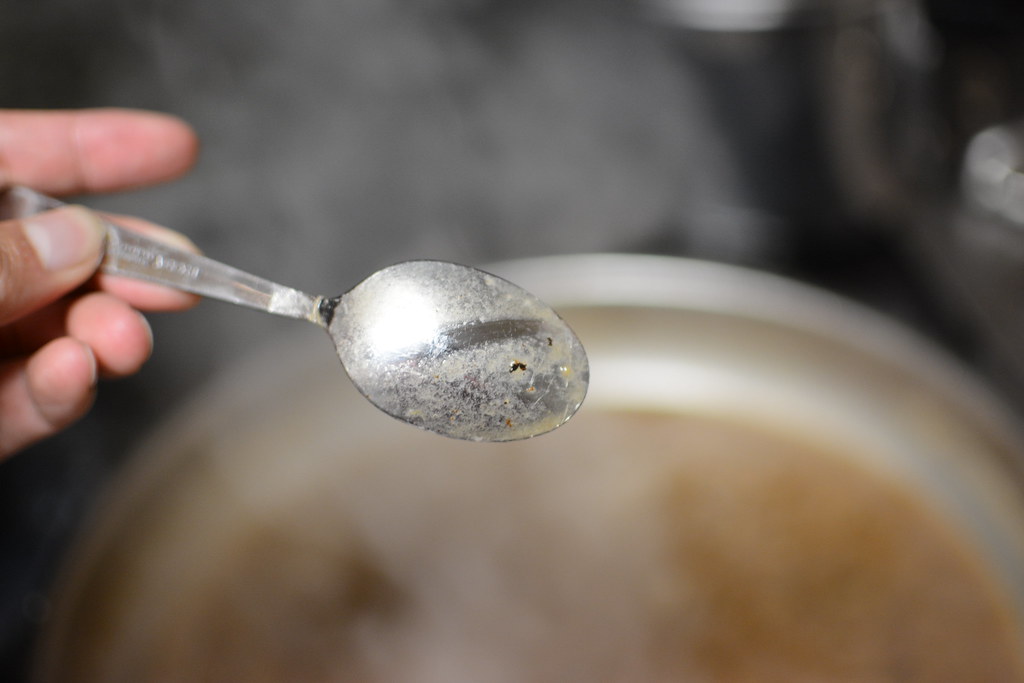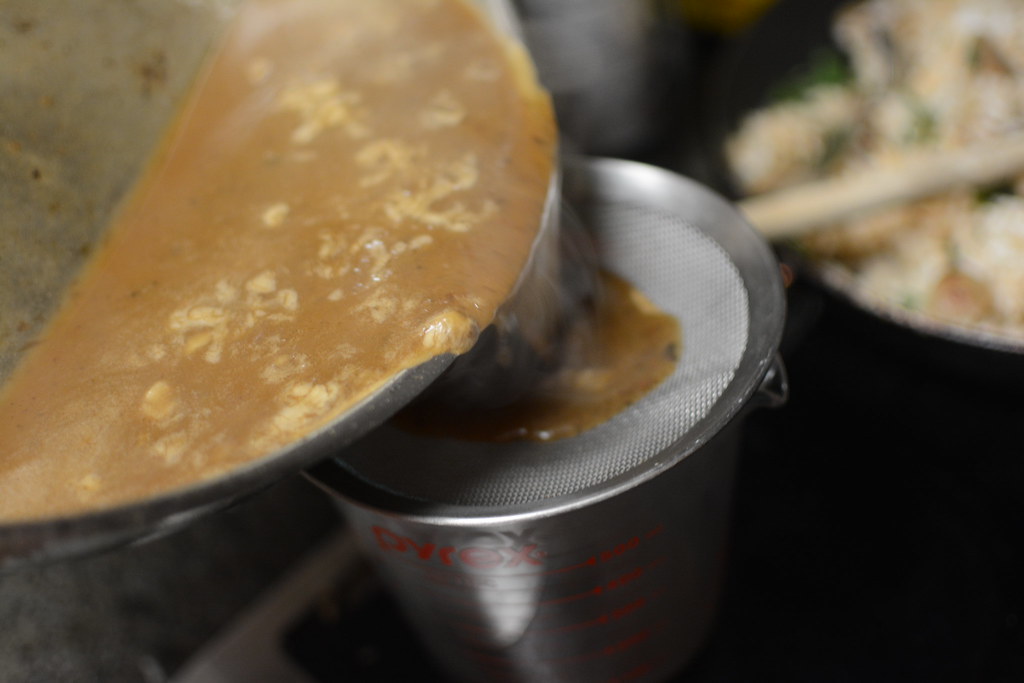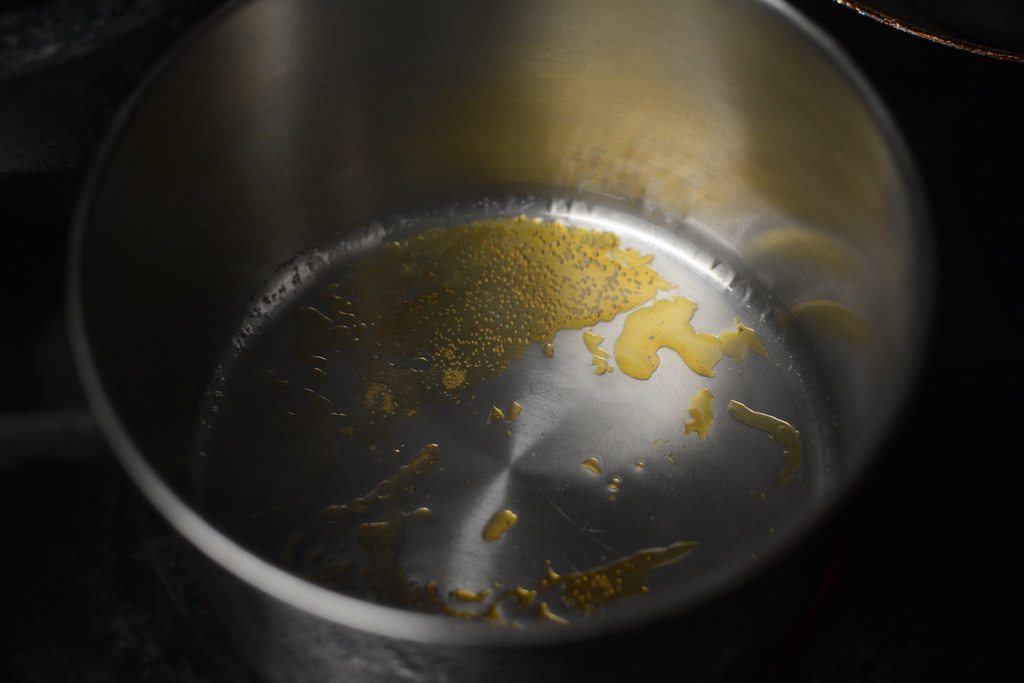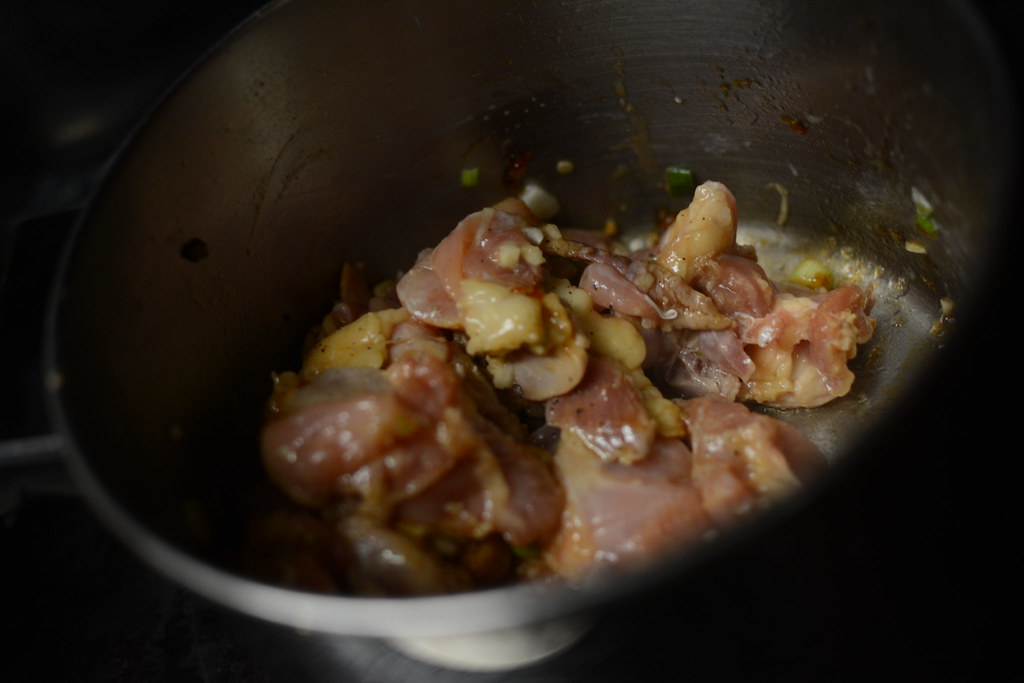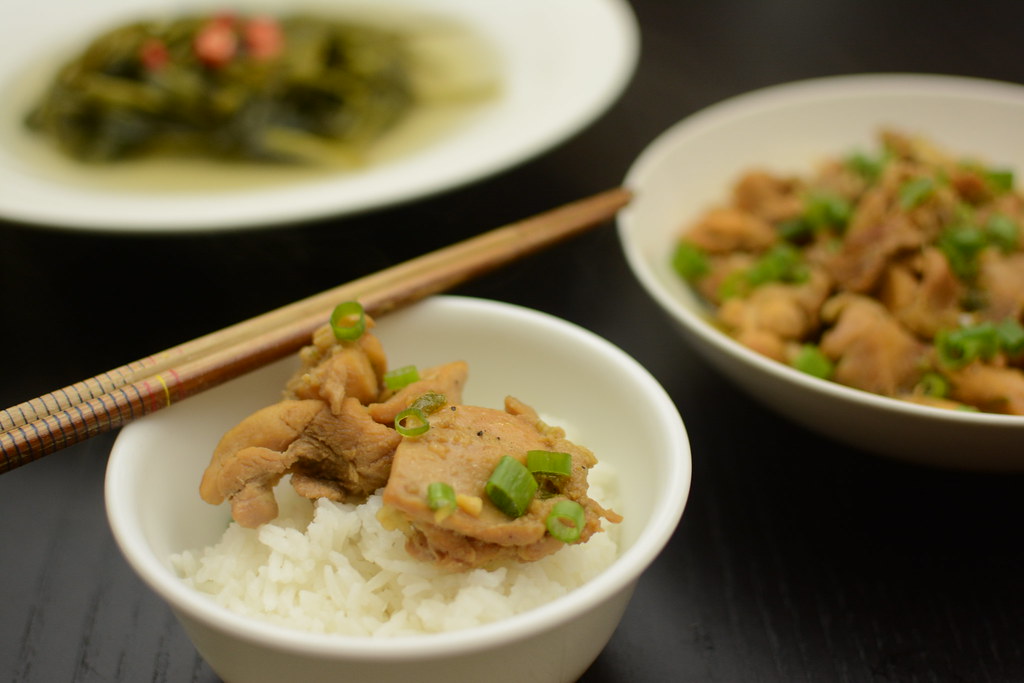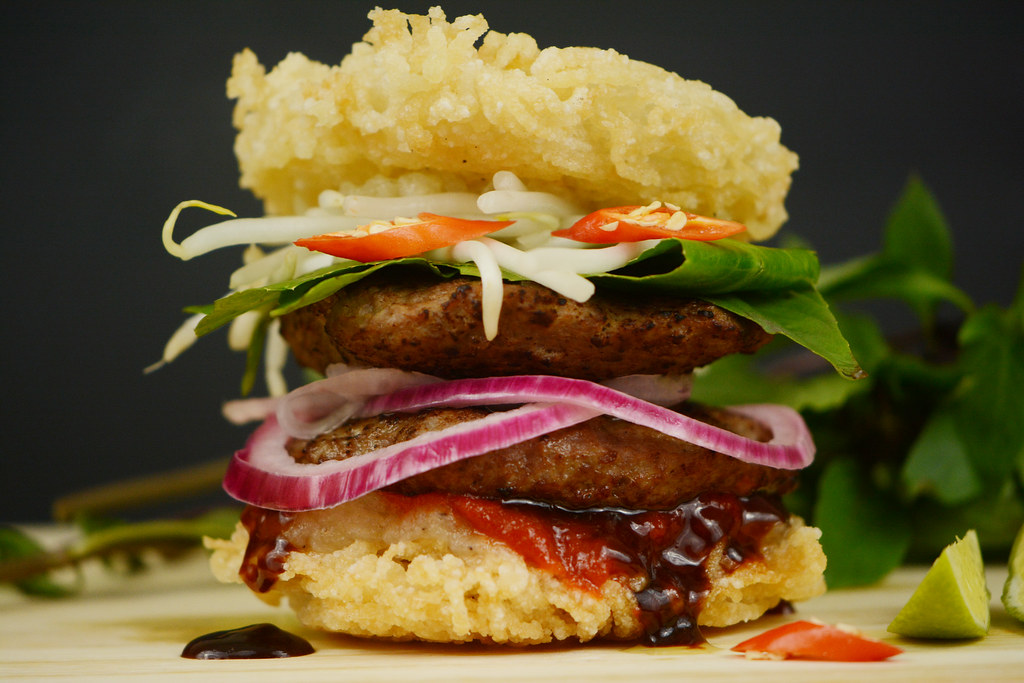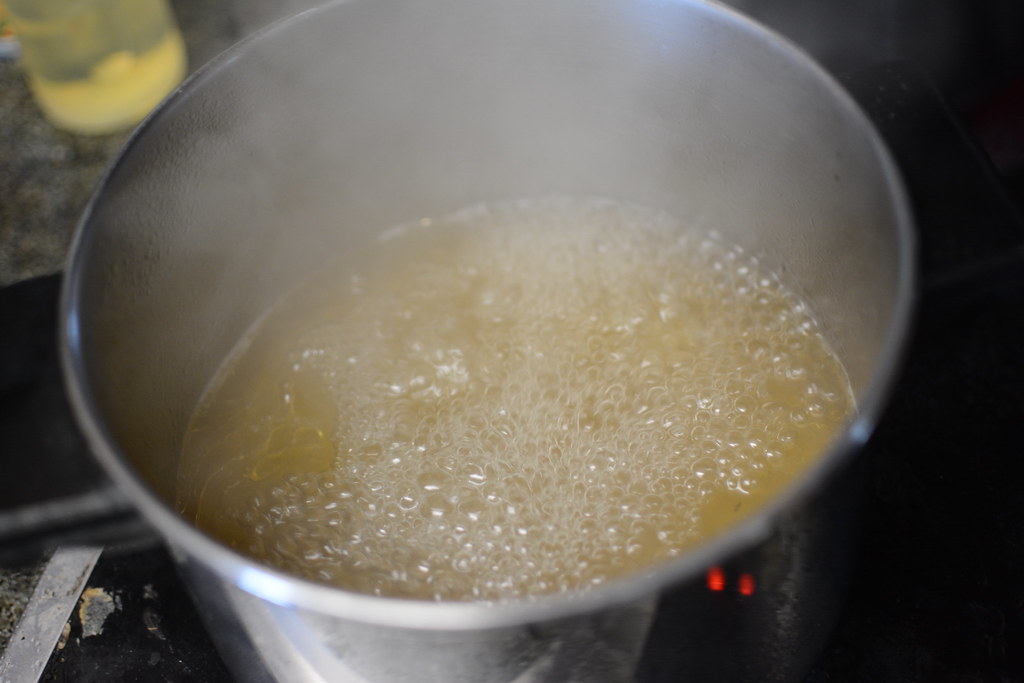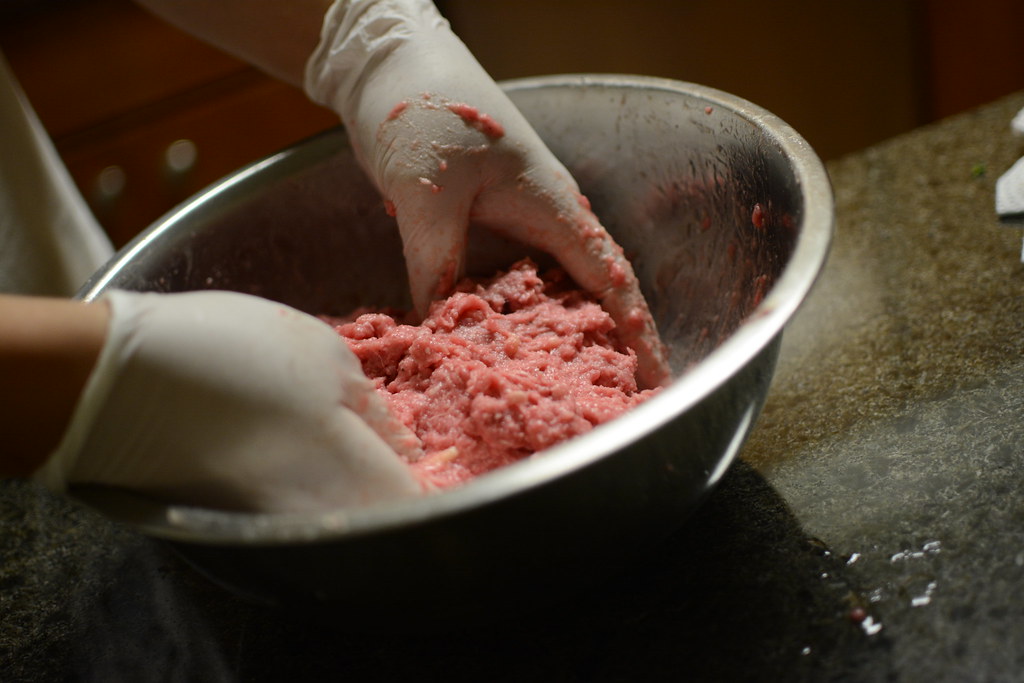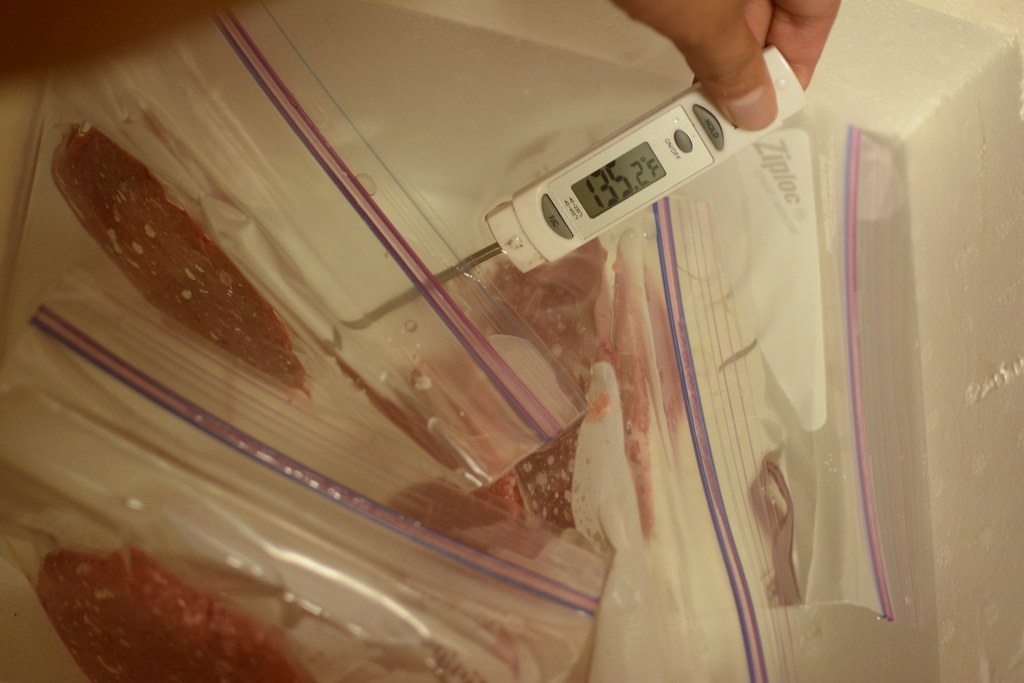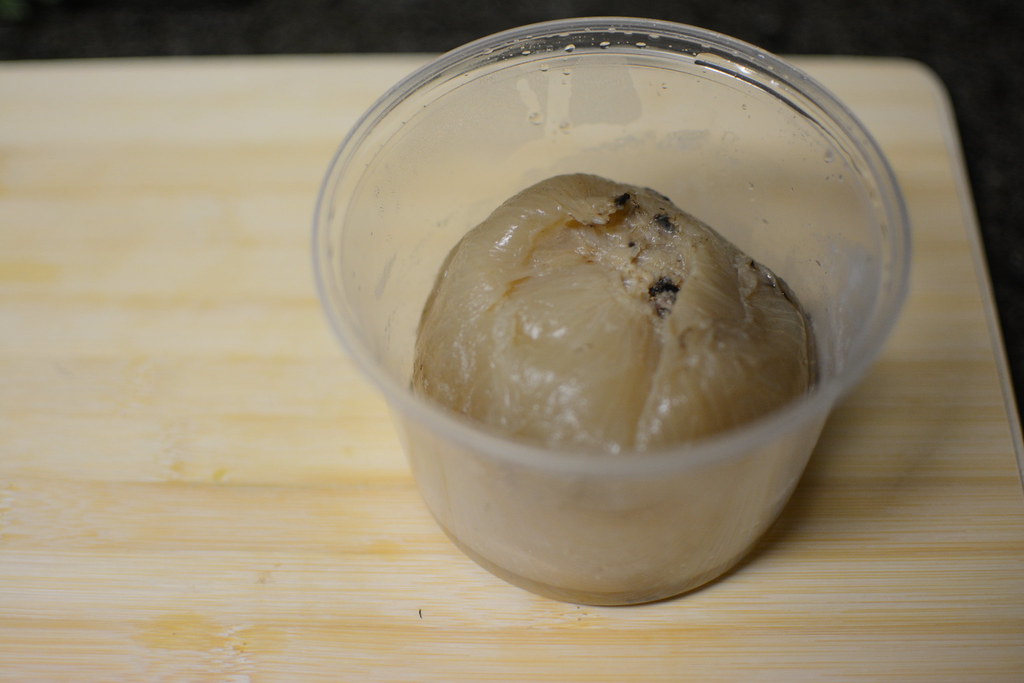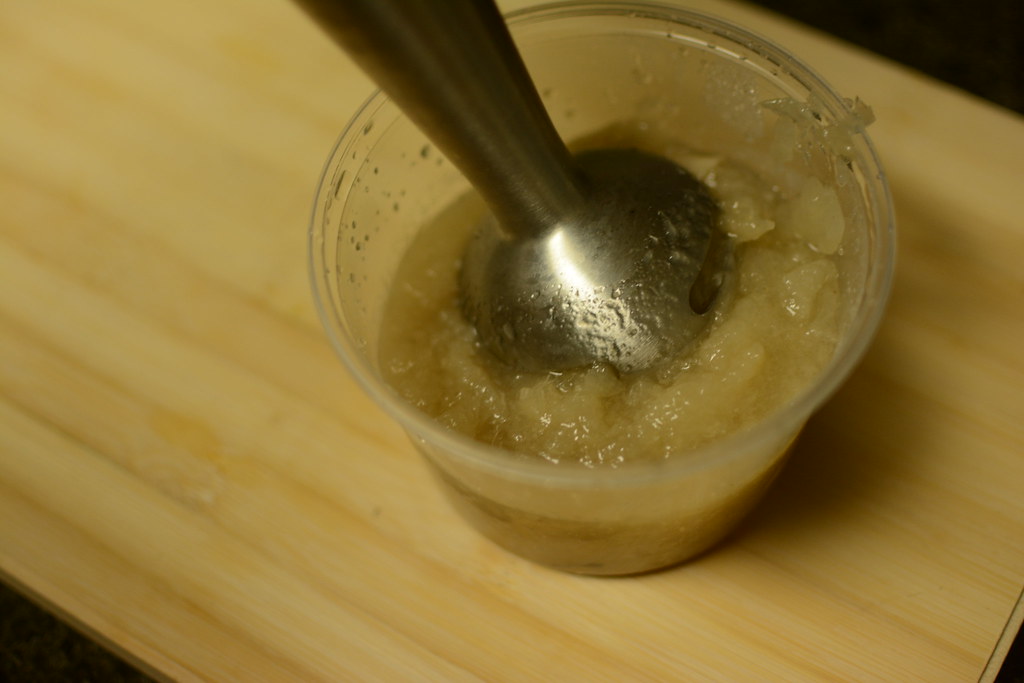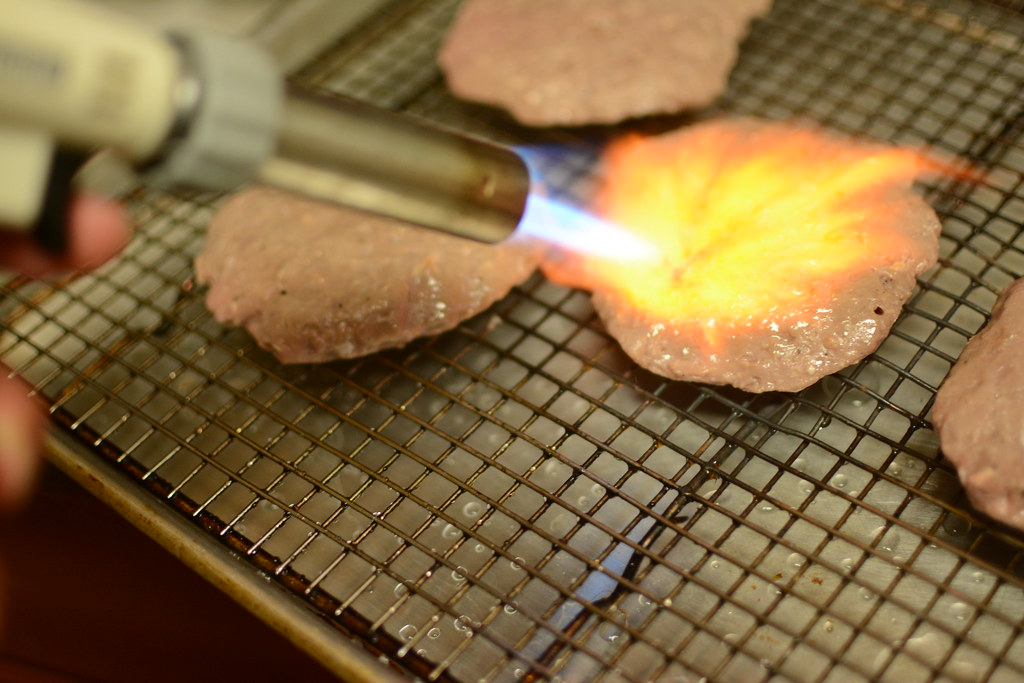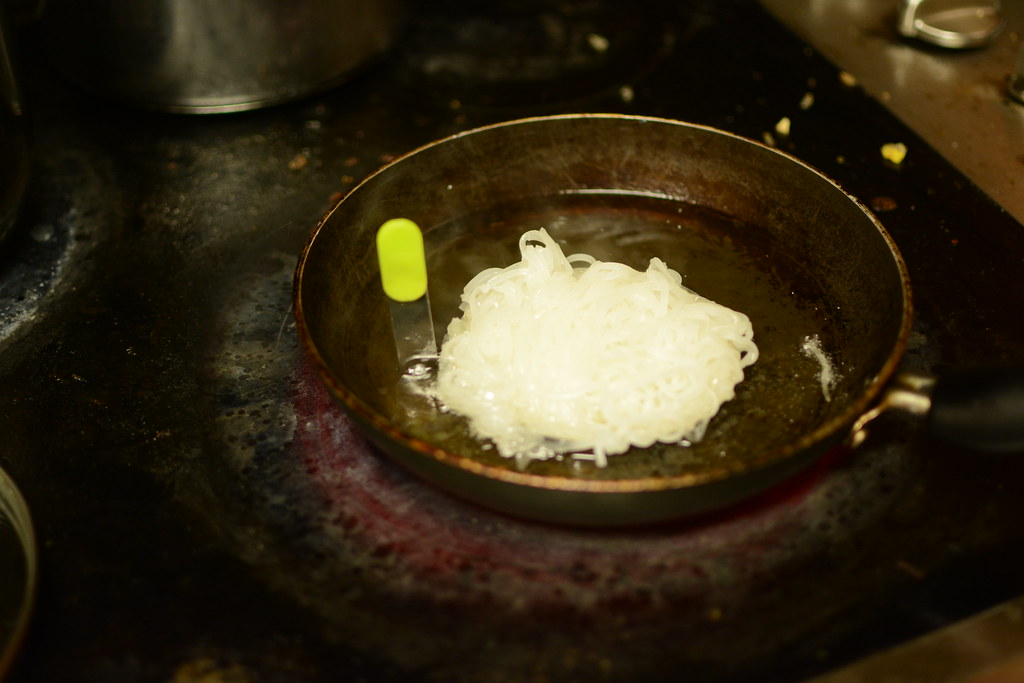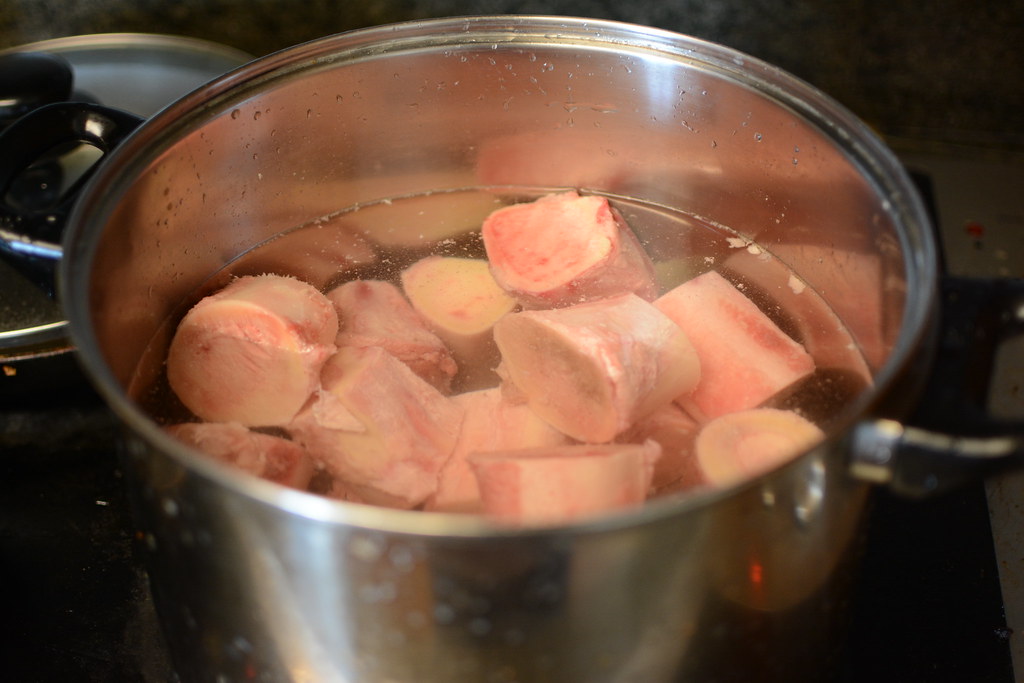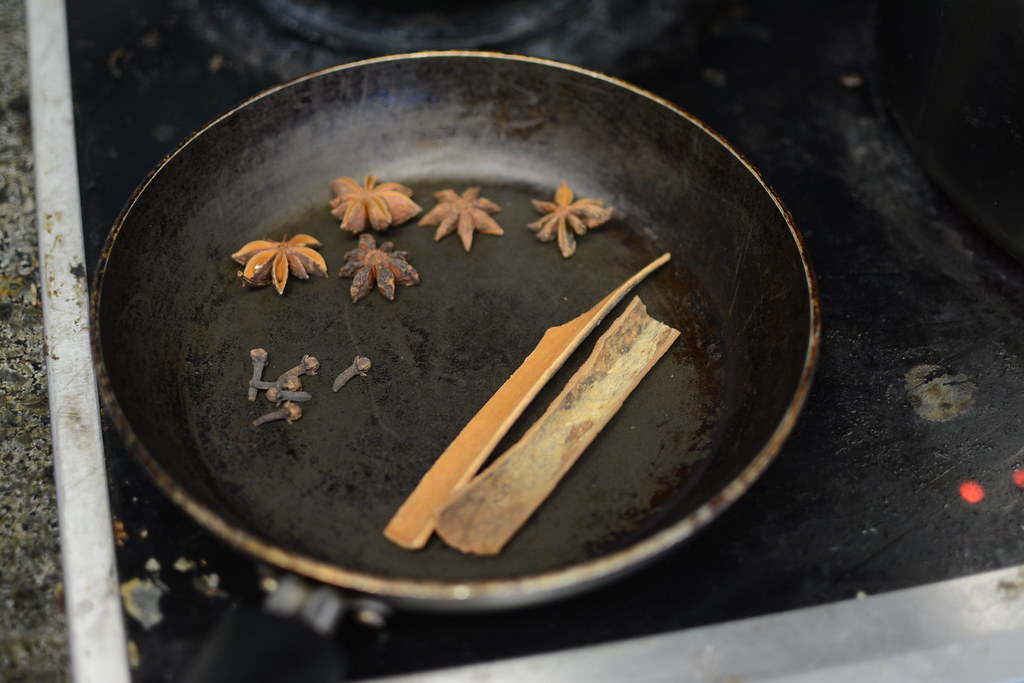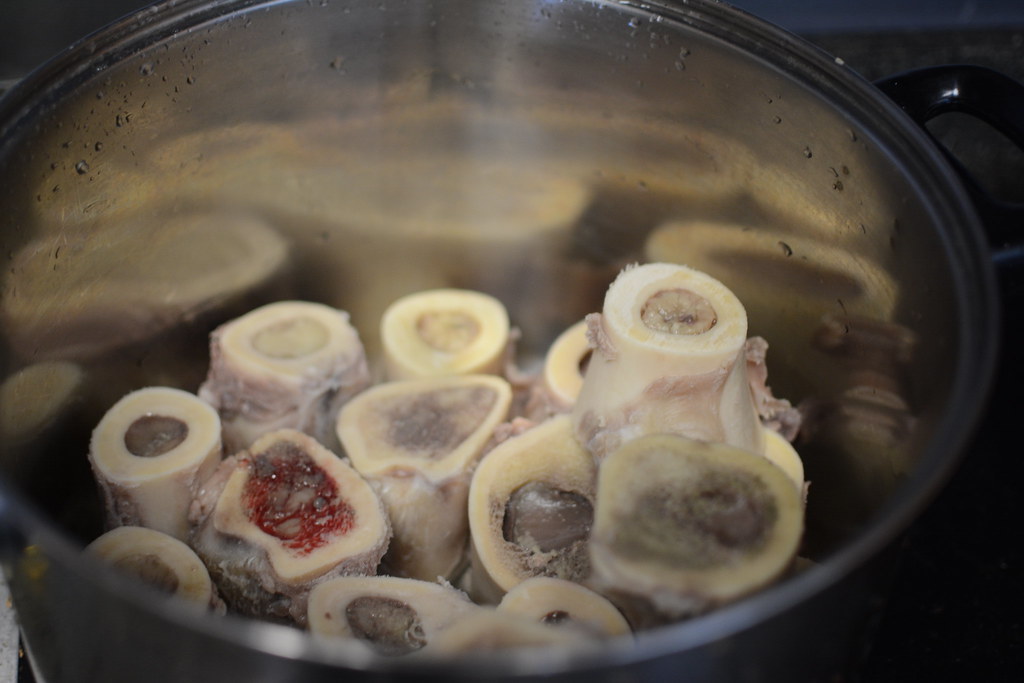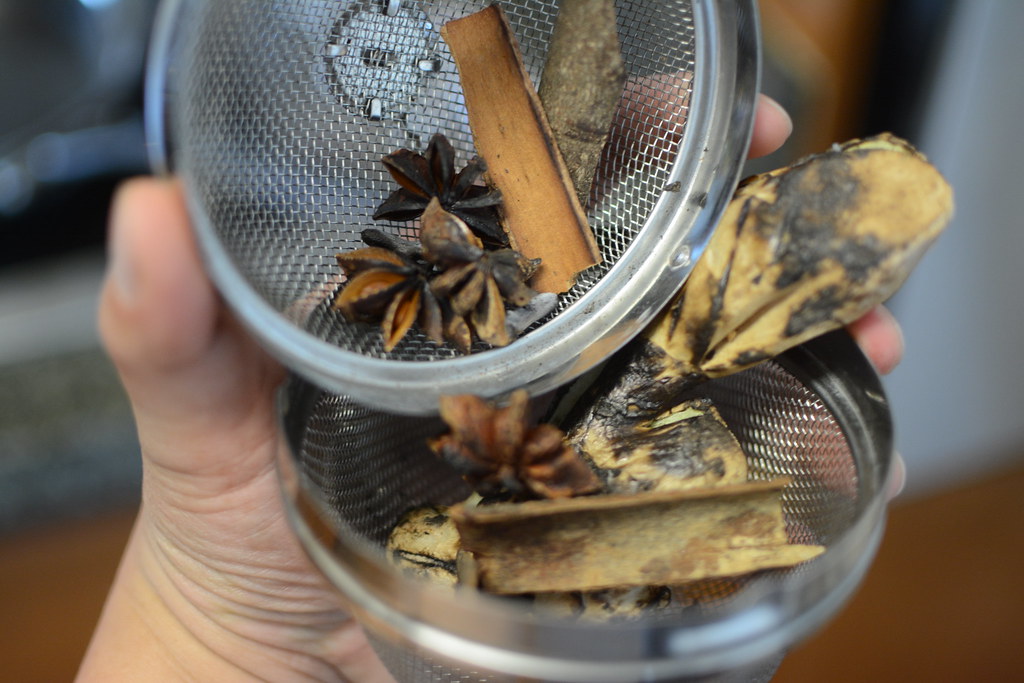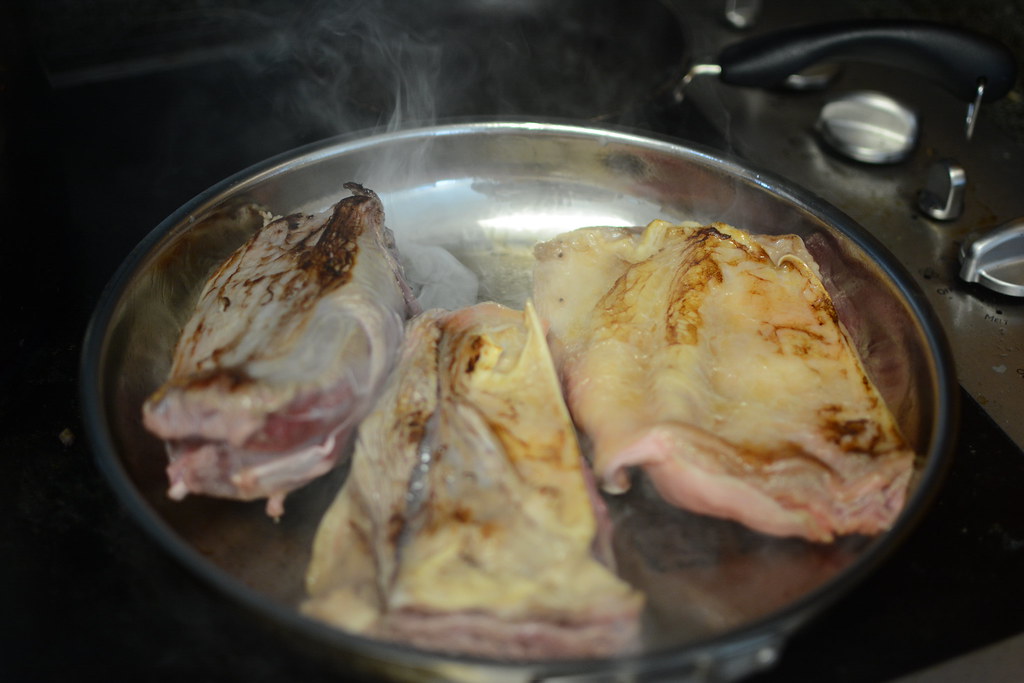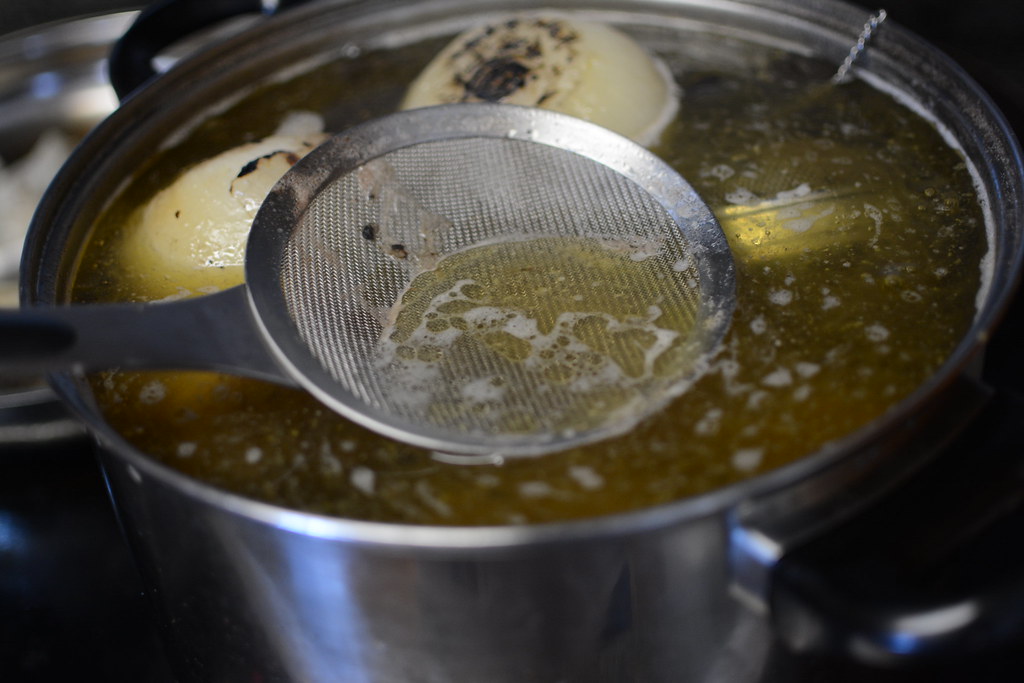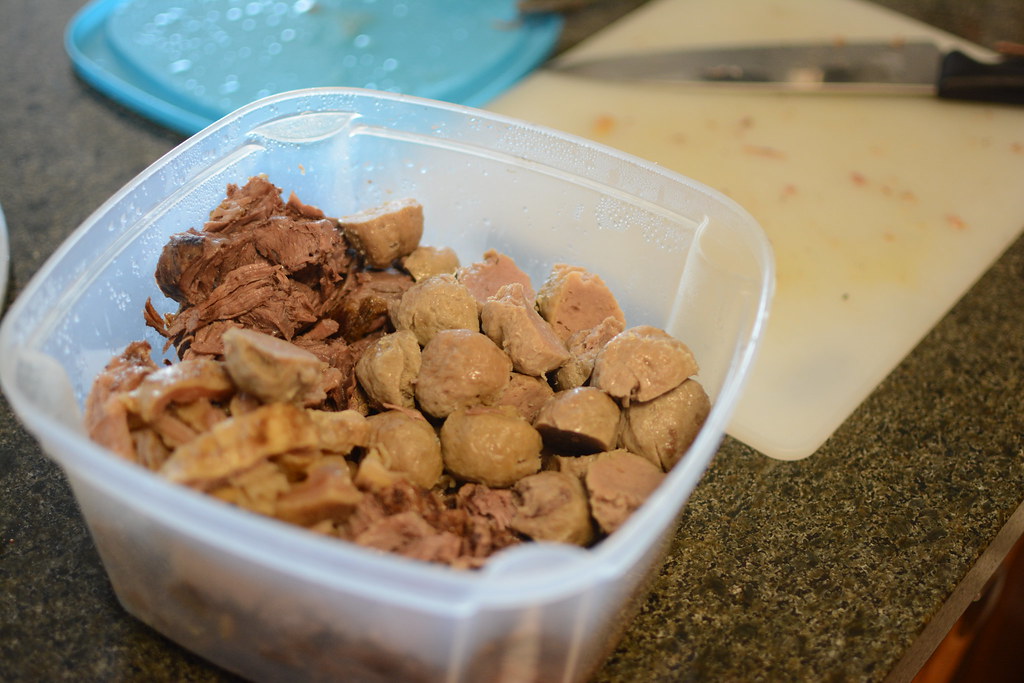Sunday, October 26, 2014
O Lepo Lepo, O Lepo Lepoooo - Moqueca de Peixe (Brazilian Fish Stew)
A few months ago I was fortunate enough to be able to travel to Brazil for the World Cup. It was such an awesome time with awesome friends in an awesome country. I guess you could say it was awesome. Despite some small setbacks, like getting ripped off by taxis, bitten by prostitutes or going to shady dance clubs, my time there was truly spectacular.
Of course the parties and the soccer were phenomenal, but the food really stood out for me. While we were in Salvador (Brazil's old capital, located right by the ocean) we ate tons of moqueca, a fish or seafood stew that's indigenous to the area. It's typically served over rice, with a side of Farofa (casava flour fried into a gritty consistency) and a caipirinha to wash it down. Our first pot of moqueca was so good we practically licked our plates clean (of course we also were not allowed to throw any food away or else one of our friends would whine about it).
I was worried that once I left Salvador, I'd never be able to eat it again, but luckily you can find almost all the ingredients at your local grocery store. The only hard to find ingredient is dende oil, or red palm oil. This deep red oil was found all over Salvador and was used to cook pretty much everything, from the deep fried acaraje to of course, moqueca. Luckily, Amazon carries dende oil, and it's prime eligible too! What a world we live in.
Definitely try this out, plus you probably won't run this risk of getting bitten in the face by a whore making this at home.
Moqueca de Peixe
Serves 4.
2 lbs of firm white fish (I used mahi mahi)
1 onion diced
2 limes
6 roma tomatoes
2 garlic cloves diced
2 bell peppers (I used the little mini bell peppers) diced
1/2 bunch of cilantro
1 hot pepper of your choice (for heat)
1 can coconut milk
1 tbsp of tomato paste
3 tbsp dende oil
2 tbsp olive oil
salt and pepper to taste
Farofa
1/2 cup of casava flour
1 garlic clove diced
2 tbsp olive oil
1. Cut the fish into large, even chunks and marinade in the juice of 1 lime, 1 tbsp olive oil and 1 tsp each of salt and pepper for 30 minutes
2. Blanch tomatoes in boiling water for 1 minute then transfer to an ice bath. Peel off the tomato skins and dice the tomatoes (optional but I don't like tomato skins)
3. In a clay moqueca pot (or a large dutch oven if you're not in Brazil) on high heat, sweat the onions and garlic with the olive oil. After onions turn translucent, add the hot peppers, bell peppers, tomatoes, and tomato paste. Cook on high for 2-3 minutes.
4. Add the coconut milk and dende oil and bring to a boil, then lower heat and simmer for 10 minutes.
5. Add fish simmer until fish is cooked all the way through (about 4 minutes). At the last minute, add the cilantro and squeeze in the juice of 1 lime. Serve over rice.
Farofa
1. To make the Farofa, heat skillet on high with olive oil and saute garlic for 2 minutes or until fragrant. Add the casava flour and toss to coat. Toast this for 3-4 minutes or until brown. Serve with meat skewers, moqueca, tacos, salad, beans, rice or anything that you want to add some crunch.
Moqueca de Peixe
Serves 4.
2 lbs of firm white fish (I used mahi mahi)
1 onion diced
2 limes
6 roma tomatoes
2 garlic cloves diced
2 bell peppers (I used the little mini bell peppers) diced
1/2 bunch of cilantro
1 hot pepper
1 can coconut milk
1 tbsp of tomato paste
3 tbsp dende oil
2 tbsp olive oil
salt and pepper to taste
Farofa
1/2 cup of casava flour
1 garlic clove diced
2 tbsp olive oil
1. Cut the fish into large, even chunks and marinade in the juice of 1 lime, 1 tbsp olive oil and 1 tsp each of salt and pepper for 30 minutes
2. Blanch tomatoes in boiling water for 1 minute then transfer to an ice bath. Peel off the tomato skins and dice the tomatoes
3. In a clay moqueca pot (or a large dutch oven if you're not in Brazil) on high heat, sweat the onions and garlic with the olive oil. After onions turn translucent, add the hot peppers, bell peppers, tomatoes, and tomato paste. Cook on high for 2-3 minutes.
4. Add the coconut milk and dende oil and bring to a boil, then lower heat and simmer for 10 minutes.
5. Add fish simmer until fish is cooked all the way through (about 4 minutes). At the last minute, add the cilantro and squeeze in the juice of 1 lime. Serve over rice.
Farofa
1. Heat skillet on high with the olive oil and saute garlic for 2 minutes or until fragrant. Add the casava flour and toss to coat. Toast this for 3-4 minutes or until brown. Serve with meat skewers, moqueca, tacos, salad, beans, rice or anything that you want to add some crunch.
Monday, October 20, 2014
Hainan Chicken Rice and Com Ga. A study in multi-cultural adaptations.
Chicken rice. Com Ga. Hainan Chicken. A dish that can be found across Asia (as I've been told, I haven't been to Asia in a while.)
From Singapore to Vietnam to China, each country puts it's own little twist on it. In Vietnam, we call it Com Ga. In China, they call it chicken riceahhhhhhhh. Whatever you call it and however you serve it, it's a delicious, and super easy to make. Perfect for a week day meal.
Com Ga is served with nuoc cham (a fish sauce/sugar/vinegar mixture) and Hainan chicken is served with a ginger scallion sauce.
So let's do this thing!
Com Ga/Hainan Chicken
Serves 4
1 4lb Fryer chicken
1 stalk of green onion
1 3 inch knob of ginger
3 cups of uncooked rice
2 quarts of water
1 tsp of salt
Brine:
2 quarts of water
6% by weight kosher salt (about 1/2 cup per quart of water)
Ginger-Scallion sauce
2 green onions - diced
1 3 inch knob of ginger
1/2 cup of vegetable oil
1 tsp salt
Nuoc Cham (prepared fish sauce)
Ask your mom to make you a giant jug of it
First things first, we're going to brine the chicken over night in a 6% salt solution. This is where a kitchen scale comes in handy. Measure out 2 quarts of water, or enough to cover the chicken, and dissolve kosher salt until you reach a 6% salt solution by weight. If you don't have a scale you can use 1/2 cup of salt per quart of water to get you close.
Cover the chicken in the brine and place in refrigerator over night. The purpose of the brine is to ensure the chicken is extra moist once you're done cooking it. The salt dissolves some of the myosin proteins in the chicken, allowing them to absorb more moisture. Don't worry, it won't be overly salty.
The next day, wash off the brine thoroughly. Stuff the cavity of the chicken with the onion and ginger. Place the chicken into a pot with a tsp of salt and cover with water. Bring it to a boil over high heat. Once at a rolling boil, turn off the heat and cover the pot with a lid and let it stand for 15-20 minutes or until the breast temp reads 145F with a meat thermometer. Remove from the pot and let chicken cool.
Instead of water, we'll be using the stock from cooking the chicken to cook the rice. Make sure you get the fat floating at the surface for some extra flavor. I threw in the ginger and onion from the cooking the chicken for a little extra oomph.
To make the ginger-scallion sauce, heat up the oil and diced onions until it starts bubbling slightly. In the mean time, grate the ginger. Once the oil starts bubbling, remove from the heat and add the salt and ginger.
Serve the chicken with the rice and your choice of sauces.
Com Ga/Hainan Chicken Rice
Serves 4
1 4lb Fryer chicken
1 stalk of green onion
1 3 inch knob of ginger
3 cups of uncooked rice
2 quarts of water
Brine:
2 quarts of water
6% by weight kosher salt (about 1/2 cup per quart of water)
Ginger-Scallion sauce
2 green onions - diced
1 3 inch knob of ginger
1/2 cup of vegetable oil
1 tsp salt
Nuoc Cham (prepared fish sauce)
Ask your mom to make you a giant jug of it
1. Brine chicken in 6% salt solution overnight
2. Wash off brine, stuff the chicken cavity with green onion and ginger. Place in pot and cover with water.
3. Bring to a boil then turn off heat and cover with lid. Let the residual heat cook the chicken for 15-20 minutes or until internal temp reads 145F
4. Cook rice using stock from cooking the chicken
5. Heat oil and diced onions until bubbles form. Grate ginger and add to the oil along with the salt.
6. Serve rice and chicken with choice of sauce
Sunday, October 19, 2014
Dangggggg. Enoki Beef Wraps
Oh well. I guess 27 isn't so bad, it is divisible by both 3 and 9... buh dum psshhhh.
Anyhow for his birthday, he had a huge BBQ at the park and everyone brought some dishes to share. My other friend Jeff brought some Dang good enoki mushrooms wrapped in thinly sliced steak marinated in soy sauce (get it, because his last name is Dang.) They were delicious, and being that everyone was super drunk, didn't last too long.
I had some left over meat and enokis from shabu shabu night so whipped this up for a quick sunday night dinner.
They taste great in a pan but really shine on the grill.
Enoki Beef Wraps
Serves 4 (quick steps at the bottom)
1 lb of thinly sliced short rib
1/2 package of enoki mushrooms (about 3.5oz)
1 green onion sliced into 3 inch pieces
Marinade
1 tbsp Ponzu sauce
1 tbsp Dark soy sauce
1 tsp sesame oil
1 tsp sugar
1 minced clove of garlic
1 minced clove of garlic
1/4 tsp pepper
Take a small amount of the mushrooms, maybe 10 or so caps and a piece of the green onion and wrap it with a piece of the short rib. Repeat.
In a small bowl, combine the marinade ingredients and then coat the beef. Make sure to roll the wraps around so they're evenly coated. Let marinade for 15 minutes.
Heat up a medium sized skillet over medium high heat for a few minutes to let it get nice and hot. Place the beef wraps into the skillet and quickly sear one side. Cover with a lid for 2 minutes to allow the mushrooms and onions to cook. After 2 minutes, remove the lid and turn the wraps so you can sear the other side, cook for another minute. Let it rest for 2-3 minutes. Serve with a side of rice.
Alternatively, you can cook these over a hot charcoal fire, turning every 30 seconds so it evenly cooks. Cook for 2 minutes, then let rest for 2-3 minutes before serving.
Enoki Beef Wraps
1 lb of thinly sliced short rib
1/2 package of enoki mushrooms (about 3.5oz)
1 green onion sliced into 3 inch pieces
Marinade
1 tbsp Ponzu sauce
1 tbsp Dark soy sauce
1 tsp sesame oil
1 tsp sugar
1 minced clove of garlic
1 minced clove of garlic
1/4 tsp pepper
1. Wrap 1 piece of onion and about 10-12 caps of mushrooms with the short rib
2. Combine the marinade and coat the beef wraps evenly, let marinade for 15 minutes
3. In a medium pan, cook over medium high heat for 2 minutes covered, turn the wraps then cook 1 minute uncovered (or grill over a hot charcoal fire for 2 minutes, turning every 30 seconds)
Wednesday, October 15, 2014
Pho-co Moco - Creative Leftovers
Leftovers. I never seem to remember the meals they were leftover from. But they're always there, in your fridge, wasting away in styrofoam boxes and plastic to-go containers before you finally decide to make room for some beer and throw away the food, which by now has probably started showing signs of intelligence.
Of course you could just reheat in the microwave and often times that'll do pig, that'll do. But luckily if you're creative, you can make a new creation out of what's left in your fridge.
This is my take on the Hawaiian loco-moco, a beef patty topped with a fried egg served over rice and smothered in gravy.
I guess I'll call it pho-co moco, made from the leftovers of my pho burger.
Pho-co Moco
Recipe makes 4 servings. (Quick recipe at the bottom)
4 Pho-burger patties
2 cups of white rice, cook it first, duh.
1 package of beef meat balls
8 eggs
2 cups of pho broth
1.5 tbsp of hoisin sauce
2 tbsp of white flour
thai basil
green onions
1. Heat a 12 inch skillet on high until so hot you could fry an egg on it (literally) and cook your burger patties. Once cooked to your liking, remove and reserve the patties in a warmed oven.
See all that fat and brown bits stuck to the bottom of the pan? You want that. That fond and fat will make the gravy oh so good.
Add in the flour and mix in with a whisk, this will form a roux. Allow the roux to cook for 4-5 minutes over medium heat to cook out the raw taste in the flour. Then add the pho broth. Make sure to whisk while adding the broth in to avoid lumps in your gravy. Keep over a medium heat and reduce.
When the gravy has reduced to a "nape" state (easily coats the back of a spoon), you're done! You can strain the gravy too if you don't like lumps. Those lovely lady lumps.
For the rice portion. Dice the meat balls into bite sized chunks and do a quick sear with the white part of the green onions. Add the rice and hoisin sauce and mix until well combined. Add in basil leaves towards the end.
Finally fry up 2 eggs per person.
Top the rice with the burger patties, the fried eggs and pour on the gravy. Oh yeah and don't forget to instagram that shit before you dig in.
Pho-co Moco
Recipe makes 4 servings.
4 Pho-burger patties
2 cups of white rice
1 package of beef meat balls
8 eggs
2 cups of pho broth
1.5 tbsp of hoisin sauce
2 tbsp of white flour
thai basil
green onions
1. Cook burger patties in heavy pan, reserve.
2. Add flour to the pan to make a roux, cook for 4 minutes and add broth while whisking. Reduce gravy until thickened
3. In another pan, add meat balls and green onions, cook for 2-3 minutes.
4. Add white rice and hoisin sauce and mix until uniform.
5. Fry eggs
6. Serve rice topped with burger patty, eggs and gravy.
Monday, October 13, 2014
Being An Adult Sucks
Growing up sucks. You have to do your own laundry, you have to cook your own meals, you have to clean the dishes after you eat. UGH. Can my mom come to the city and do my chores for me, it's only 50 miles away. Thanks Mom!
This is a fairly typical meal that I had growing up. A meat dish and a soup dish, served over rice. Today I went with caramelized chicken and a simple water spinach soup. Clean, healthy eating after a weekend of dirty martinis.
Water Spinach Soup (Canh Rau Muong)
Makes 4 servings
A big bushel of water spinach (Rau Muong), cut into 3-4 inch pieces
about a quart of water
2 garlic cloves
1/2 a lime
2 tbsp of fish sauce (more to taste)
1. In a pot, bring 1 quart of water to a rolling boil and add the washed water spinach.
2. After 4 minutes remove the water spinach from the water.
3. Add 2 crushed cloves of garlic (don't mince), the lime juice and the fish sauce. Bring back to simmer.
4. Simmer for 5-10 minutes to let the flavors marry, add the water spinach back to the broth before serving.
5. I like to serve this soup with a side of pickled egg plants in fish sauce, easily found at any Asian grocery store.
Caramelized Chicken (Ga Ram Mam)
Makes 4 servings
1 lb of chicken thighs, cute into 2 inch chunks
1 minced clove of garlic
2 minced green onions
1 tbsp of sugar
1/4 tsp salt
1/4 tsp pepper
1 tbsp vegetable oil
1 tbsp fish sauce (or to taste)
1. Add the minced garlic and the white part of the green onion to the chicken along with the salt and pepper. Mix and let marinade for 15-20 minutes.
2. In a sauce pan or small pot, add the sugar and oil and turn the heat to high. Let the sugar melt and turn to caramel. DO NOT STIR the sugar with anything, just roll the pan around until it looks caramel-y
3. At this point, add the chicken and quicky stir to coat the chicken with the caramel sauce. Then add 1/4 cup of water and the fish sauce and cover with a lid (or a plate if you can't find that one lid that fits)
4. Bring the chicken to a boil and then reduce the heat to med-low and cook for 5 minutes. Then remove the lid and let cook for another 20 minutes until the sauce has reduced and thickened. Sprinkle on the rest of the green onions. Serve immediately.
Meals like this are easy to make on a weeknight when you're lazy since the majority of the cook time is just waiting around. The beauty with these meals are that they're pretty versatile, you can switch out the protein or the veggies with whatever you have around so you don't even have to go to the store. Plus afterwards, you don't have that many dishes to clean because they're both cooked in 1 pot. I guess growing up isn't that bad.
But now... what to do about that pile of laundry...
This is a fairly typical meal that I had growing up. A meat dish and a soup dish, served over rice. Today I went with caramelized chicken and a simple water spinach soup. Clean, healthy eating after a weekend of dirty martinis.
Water Spinach Soup (Canh Rau Muong)
Makes 4 servings
A big bushel of water spinach (Rau Muong), cut into 3-4 inch pieces
about a quart of water
2 garlic cloves
1/2 a lime
2 tbsp of fish sauce (more to taste)
1. In a pot, bring 1 quart of water to a rolling boil and add the washed water spinach.
2. After 4 minutes remove the water spinach from the water.
3. Add 2 crushed cloves of garlic (don't mince), the lime juice and the fish sauce. Bring back to simmer.
4. Simmer for 5-10 minutes to let the flavors marry, add the water spinach back to the broth before serving.
5. I like to serve this soup with a side of pickled egg plants in fish sauce, easily found at any Asian grocery store.
Caramelized Chicken (Ga Ram Mam)
Makes 4 servings
1 lb of chicken thighs, cute into 2 inch chunks
1 minced clove of garlic
2 minced green onions
1 tbsp of sugar
1/4 tsp salt
1/4 tsp pepper
1 tbsp vegetable oil
1 tbsp fish sauce (or to taste)
1. Add the minced garlic and the white part of the green onion to the chicken along with the salt and pepper. Mix and let marinade for 15-20 minutes.
2. In a sauce pan or small pot, add the sugar and oil and turn the heat to high. Let the sugar melt and turn to caramel. DO NOT STIR the sugar with anything, just roll the pan around until it looks caramel-y
3. At this point, add the chicken and quicky stir to coat the chicken with the caramel sauce. Then add 1/4 cup of water and the fish sauce and cover with a lid (or a plate if you can't find that one lid that fits)
4. Bring the chicken to a boil and then reduce the heat to med-low and cook for 5 minutes. Then remove the lid and let cook for another 20 minutes until the sauce has reduced and thickened. Sprinkle on the rest of the green onions. Serve immediately.
Meals like this are easy to make on a weeknight when you're lazy since the majority of the cook time is just waiting around. The beauty with these meals are that they're pretty versatile, you can switch out the protein or the veggies with whatever you have around so you don't even have to go to the store. Plus afterwards, you don't have that many dishes to clean because they're both cooked in 1 pot. I guess growing up isn't that bad.
But now... what to do about that pile of laundry...
Tuesday, October 7, 2014
Dat not Pho, Dat Hamburgah
Last weekend I ate burgers for 4 meals in a row. I love burgers. I love pho. Why not combine them?
This is my burger, there are many like it but this one is mine.
The stack:
Rice noodle bun
Bean sprouts, thai basil and saw tooth herb.
Pho infused beef patties
Hanh dam (pickled onions)
Pho-soaked onion puree
Sriracha/hoisin
Anyways, on to the recipe!
Recipe makes 4 double burgers.
2 lbs of ground beef - I used 80% lean chuck
5 cups of reserved pho broth (for pho recipe, scroll on down)
1 lb of pho noodles
Toppings
Pickled Onions
- 1/2 a medium red onion
- Rice wine vinegar
- 1 tbsp sugar
Thai Basil
Saw tooth herb
Bean sprouts
Chili peppers
Lime
Sriracha
Hoisin sauce
Reduce the broth down by 80% to intensify the flavors. Once reduced, let cool to room temperature then chill in the fridge overnight.
In a large mixing bowl, combine the ground beef, chilled broth concentrate, salt and pepper to taste (about 2 tsp of each). You can remove the solidified fat from the broth if you'd like.
Gently combine the mixture and form into 8 evenly sized patties. Don't be too rough here or you'll get a weird paste like texture.
Pack the patties in ziplock bags and cook sous vide at 135F for 1.5 hours. If you have a sous vide machine, use it mr fancy pants; otherwise get a styrofoam cooler and fill it with 135 degree water and cover the top, it should hold the temp for a few hours.
Now here's the secret ingredient. This is one of the charred, broth soaked onions from the pho cooking process. Something you'd never be able to get a restaurant, but my mom used to let me eat it every time she made pho. Take it and blitz it with a stick blender to make an umami packed puree.
Once the patties are done, take them out of the water bath. They'll look like slimy grey snot, but will be cooked to a perfect medium rare all the way through. To make it look more appealing, take out the blow torch and go to work.
To make the buns, cook the pho noodles per package instructions, but take them out of the water when they're still super al dente. You'll be frying them so you don't want to over cook them. The noodles have a lot of starch in them so you don't need a binder like egg to keep it together, but a mold helps. Fry the pho buns until golden brown on both sides. This is a similar technique to Pho Ap Chao, a pretty awesome dish... hmmm maybe that'll be the next post.
Assemble the burgers, get a crap load of paper towels and enjoy! Serve with some Heineken for that authentic Viet experience.
PS:
The photography has been inspired by pornburger.me Check them out if you're ever missing some food porn in your life.
The stack:
Rice noodle bun
Bean sprouts, thai basil and saw tooth herb.
Pho infused beef patties
Hanh dam (pickled onions)
Pho-soaked onion puree
Sriracha/hoisin
Anyways, on to the recipe!
Recipe makes 4 double burgers.
2 lbs of ground beef - I used 80% lean chuck
5 cups of reserved pho broth (for pho recipe, scroll on down)
1 lb of pho noodles
Toppings
Pickled Onions
- 1/2 a medium red onion
- Rice wine vinegar
- 1 tbsp sugar
Thai Basil
Saw tooth herb
Bean sprouts
Chili peppers
Lime
Sriracha
Hoisin sauce
Reduce the broth down by 80% to intensify the flavors. Once reduced, let cool to room temperature then chill in the fridge overnight.
In a large mixing bowl, combine the ground beef, chilled broth concentrate, salt and pepper to taste (about 2 tsp of each). You can remove the solidified fat from the broth if you'd like.
Gently combine the mixture and form into 8 evenly sized patties. Don't be too rough here or you'll get a weird paste like texture.
Pack the patties in ziplock bags and cook sous vide at 135F for 1.5 hours. If you have a sous vide machine, use it mr fancy pants; otherwise get a styrofoam cooler and fill it with 135 degree water and cover the top, it should hold the temp for a few hours.
Now here's the secret ingredient. This is one of the charred, broth soaked onions from the pho cooking process. Something you'd never be able to get a restaurant, but my mom used to let me eat it every time she made pho. Take it and blitz it with a stick blender to make an umami packed puree.
Once the patties are done, take them out of the water bath. They'll look like slimy grey snot, but will be cooked to a perfect medium rare all the way through. To make it look more appealing, take out the blow torch and go to work.
To make the buns, cook the pho noodles per package instructions, but take them out of the water when they're still super al dente. You'll be frying them so you don't want to over cook them. The noodles have a lot of starch in them so you don't need a binder like egg to keep it together, but a mold helps. Fry the pho buns until golden brown on both sides. This is a similar technique to Pho Ap Chao, a pretty awesome dish... hmmm maybe that'll be the next post.
Assemble the burgers, get a crap load of paper towels and enjoy! Serve with some Heineken for that authentic Viet experience.
PS:
The photography has been inspired by pornburger.me Check them out if you're ever missing some food porn in your life.
Sunday, October 5, 2014
What's up Mother Pho-ker
What is best in life?
The open step. A fleet horse. Falcons at your wrist, and the wind in your hair.
WRONG!
WRONG!
CONAN! What is best in life?
A hot bowl of pho.
YAHHHHHH!!! That is good. That is good.
Welcome to my new food blog. Here I'll be posting my creations, whether they be of my own mind or my take on a tried and true recipe.
Pho has a special place in almost every Vietnamese person's heart, whether it's the clean clear chicken pho of northern Vietnam or the deep dark beef pho of Saigon. It can be eaten day or night, for breakfast, lunch, dinner or as a 2am drunk as hell from the club meal. Pho can cure the worst of hangovers and induce memories of days gone by sitting at the family table with a steaming bowl in front of you.
It is the ultimate comfort food.
Recipe makes 6-8 Xe Lua sized bowls of pho (depending on your definition of XL)
For the Broth:
6lbs of beef shin bones
1 lb of beef shank
1 lb of rough flank
1 lb of thinly sliced rib-eye
2 medium sized yellow onions
1 4 inch piece of ginger
5 star anise
6 cloves
3 inch piece of cinnamon
1 oz chunk of rock sugar (about 1 square inch)
4 tbsp fish sauce
1.5 tbsp salt
For the bowls:
Pho noodles - either dried or fresh, enough for 6-7 bowls (2 one lb packages)
Limes
Bean Sprouts (can be served slightly steamed or raw)
Thai Basil
Saw tooth herb
Cilantro - diced
Green onion - diced
Sriracha
Hoisin Sauce
First things first. Turn on some football.
In a large 12qt pot (I used a much smaller one, the bigger you can get the better) add your beef bones and cover with water. Bring it to a boil and parboil the bones for 3-4 minutes to release the impurities from the bones, which would make your broth cloudy; and ain't nobody want that.
While the water is coming to a boil, char the onions and ginger over a flame. If you're in an apartment with electric stoves, use a portable camping stove. For maximum smokey-ness, try charring the onions and ginger over a charcoal fire. Once you get a nice char, rinse off any flakey or black bits from the onions and ginger. Charring the onion and ginger adds a subtle sweetness and smokey note to the broth, and definitely should not be skipped.
In a dry pan, toast the star anise, cinnamon and cloves to release the flavorful oils trapped within. If you have the time, clean your stove top.
Once the bones have boiled for a few minutes, drain the pot and rinse the bones of any stuck on gunk. Then make sure you clean the pot well before placing the bones back in.
I use this little metal mesh ball to hold all the spices. It takes up some room in the pot, but makes it a lot easier later since you don't have to fish out the little cloves.
Add 6 quarts of cold clean water to the pot, a long with the onions, ginger, spices, salt, rock sugar and fish sauce.
Now this next step is totally optional, and when I say optional, I mean mandatory. Most recipes have you just add the raw meat to the pot of water, whether it's brisket or flank. I wanted to boost the flavor of my broth so I did a quick sear of the shank and flank before I added it to the pot.
Now comes the fun part! Waiting! WOO! Let the broth simmer for as long as you can stand it, but at least 4-5 hours to let the flavors come together. During this time, skim off any gunk that floats to the surface for dat clear broth. There will be a lot of beef fat from the bones that will come to the surface and you can skim it off if you'd like. I prefer to leave the fat layer until the very end, as I feel it makes the broth much beefier than if you had skimmed off all the fat early on in the cooking process.
When the broth is almost done, fish out the meat, let it cool and slice into bite sized pieces.
Finally, cook the noodles per package instructions and assemble the bowls. I elected to use rib-eyes here for my "Tai" but most recipes call for eye of round. I find rib-eye much more flavorful due it's intense marbling. It may be more expensive, but come on, are you poor? Ladle on the hot broth and serve!
The aftermath.
Thanks for reading all the way to the end, please comment if you'd like, or not, whatever, I'm not a cop.
Until next time!
TL;DR: New York Matinee called it a playful yet mysterious little dish. You'll love it.
Subscribe to:
Posts (Atom)

